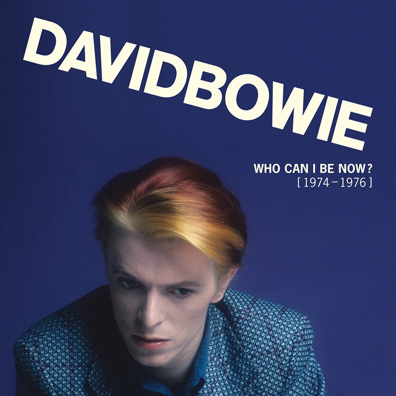
David Bowie
Who Can I Be Now? (1974-1976)
Parlophone/Rhino
Oct 21, 2016
Web Exclusive
![]()
Parlophone’s latest David Bowie reissue box set has already grabbed some attention for including The Gouster, a rare 1974 album that Bowie later scrapped and remixed as Young Americans. But Who Can I Be Now? has much more going for it, especially for die hard Bowie fans, as a snapshot of Bowie’s brief but eclectic “plastic soul” era.
This set beautifully compiles Bowie’s output from those pivotal years, shining a thematic light on his graceful dive from glam-rock heights into sounds typically reserved for black audiences, with career-redefining results. The origins of this transition are traced here, from experimental roots on the Diamond Dogs track “1984” to “Young Americans,” the defining plastic soul moment, and culminating in his seminal Station to Station, a coke-fueled masterpiece that bridges the gap into the Berlin trilogy.
The Gouster isn’t exactly new—its tracks have showed up on various compilations and reissues—but this set treats it like a parallel universe album, complete with an album sleeve based on Bowie’s original concept. It is, more or less, a Young Americans prototype, less polished, and missing the essential trash-glam track “Fame.” But it is grittier, more authentic, and paints a more nuanced picture of the atmosphere Bowie was trying to capture. The seven-minute version of “John, I’m Only Dancing” is a high point, but at the end of the day Young Americans is a more polished and well-rounded record. Luckily, it is included here too.
Bowie’s experiment with disco is best showcased on Station to Station, a serious contender for Bowie’s strongest album. While reminders of plastic soul show up in songs like “Stay” and “Word on a Wing” (which might be Bowie’s most impressive vocal performance), the album is perhaps best known for its title track, a sprawling rock and roll epic that introduces his late ‘70s hedonist persona, The Thin White Duke. It also serves as the pinnacle of Bowie’s ‘70s creativity. The original album is joined here by a remix by original producer Harry Maslin, previously only available on the deluxe set DVD. The differences are subtle, but the new mix is even clearer than the original, and individual percussion sounds are more noticeable as is Bowie’s vocal inflections.
What is even more remarkable is that through all of these piles of songs there is rarely a sour note, rarely an uneven performance. These are Bowie’s most intense years, the transitions and risks he made during this time on full display. Few artists reach such landmarks after lifetimes in music, yet for Bowie this just a small slice of his life’s work. (www.davidbowie.com)
Author rating: 9/10
Average reader rating: 0/10
Current Issue

Issue #72
Apr 19, 2024 Issue #72 - The ‘90s Issue with The Cardigans and Thurston Moore
Most Recent
- 10 Best Songs of the Week: Nilüfer Yanya, Linn Koch-Emmery, Fat Dog, Crumb, St. Vincent, and More (News) —
- Fat Dog Announce New Album and Tour, Share Video for New Song “Running” (News) —
- The Obsessed, Howling Giant @ Brooklyn Meadows, NYC, April 12, 2024 (Review) —
- Premiere: Slow Joy Releases New Single and Video for “King Cowboy” (News) —
- Premiere: Mackenzie Shrieve Shares New Single “Didn’t I Tell Ya” Feat. Jane Bruce (News) —

Comments
Submit your comment
There are no comments for this entry yet.